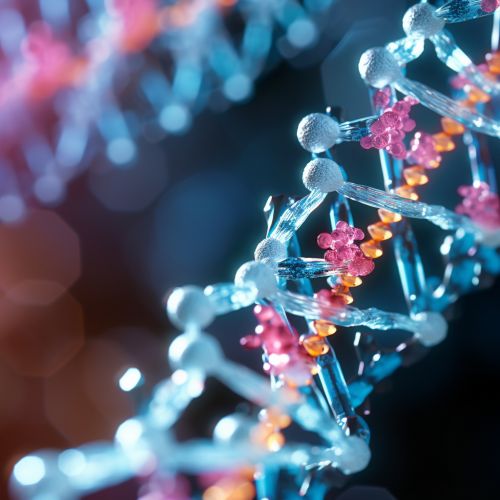Okazaki fragments
Introduction
Okazaki fragments are short, newly synthesized DNA fragments that are formed on the lagging template strand during DNA replication. They are complementary to the lagging template strand, together forming short double-stranded DNA sections. Okazaki fragments are named after the Japanese scientist Reiji Okazaki, who first discovered them.
Discovery
The discovery of Okazaki fragments was a significant breakthrough in understanding the mechanism of DNA replication. In the late 1960s, Reiji Okazaki and his wife Tsuneko Okazaki conducted a series of experiments that led to the discovery of these fragments. The Okazaki fragments provided the first experimental evidence that DNA replication is a discontinuous process on the lagging strand.


DNA Replication
DNA replication is a biological process that occurs in all living organisms and is the basis for biological inheritance. The process is initiated at particular points in the genome, known as origins. Unwinding of DNA at the origin, and synthesis of new strands, forms a replication fork. In addition to DNA polymerase, the enzyme that synthesizes the new DNA, there are other cellular machinery that assist in this process, including DNA helicase, DNA ligase, and primase.
Role in DNA Replication
During DNA replication, one strand, which is known as the leading strand, is replicated continuously in the 3' to 5' direction. However, the other strand, known as the lagging strand, is replicated discontinuously in short sections, 1,000 to 2,000 nucleotides long, that are synthesized in the 5' to 3' direction. These short sections are called Okazaki fragments.


Synthesis of Okazaki Fragments
The synthesis of Okazaki fragments begins with the synthesis of a short RNA primer by the enzyme primase. This primer serves as the starting point for DNA synthesis. DNA polymerase then adds nucleotides to the primer, synthesizing a fragment of DNA. Once an Okazaki fragment has been synthesized, the RNA primer is removed and replaced with DNA. The fragments are then joined together by the enzyme DNA ligase.
Importance of Okazaki Fragments
The discovery of Okazaki fragments was crucial in understanding the mechanism of DNA replication. It provided the first experimental evidence that DNA replication is a discontinuous process on the lagging strand. The synthesis of Okazaki fragments also helps to ensure that the entire length of the lagging strand is accurately replicated.


See Also
References
- Okazaki, R., Okazaki, T., Sakabe, K., Sugimoto, K. (1968). "Mechanism of DNA chain growth. I. Possible discontinuity and unusual secondary structure of newly synthesized chains". Proc. Natl. Acad. Sci. U.S.A. 59 (2): 598–605. doi:10.1073/pnas.59.2.598. PMC 224637. PMID 4967086.
- Kornberg, A., Baker, T. A. (1992). DNA Replication, 2nd Edition. University Science Books. ISBN 0-935702-24-2.
